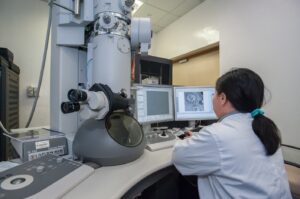Medical innovation is the process of developing new medical devices, drugs, and procedures. Medical innovation is a broad and complex topic. It includes research and development of new drugs and devices and public health policies to ensure access to these innovations. It also goes over the development of better ways to deliver care to different patients.
This form of innovation works and immense part in the growth of the economy, regardless of where you’re from.
The Role of Medical Innovation in the Economy
Medical innovation is the future of the economy. It’s a significant part of our society and will continue to make a difference in people’s lives. Innovations in the medical field have been a driving force of monetary growth for several years in the past.
Medical innovations have been a driving force of the growth of most countries in the past. In 2015, the global health care industry was valued at $7.4 trillion and grew at an annual rate of around 4% until 2020. One factor that drives this growth is medical innovation, which can be defined as “the process of introducing new or improved products, processes, or services.”
Why Exactly is Medical Innovation Important?
Medical innovation is important because it can improve the quality of life itself. For most people, medical innovation can prove to be quite resourceful, allowing them to lead a much healthier and or convenient life. Now, some innovations aim to formulate better treatments, while others focus on making healthcare more accessible to those who need it most.
There are various innovations that have come about in recent years that have improved healthcare and made it more accessible to everyone, including those who need it most.
Medical innovation is important for a number of reasons. The first reason is that medical innovation will be the key to solving many of the world’s health challenges. Secondly, medical innovation has also proven to have a positive economic impact on society.
Medical Innovation has acted out as invaluable because medical innovations have been shown to increase productivity and improve health outcomes, which in turn leads to improved quality of life.
Silicon Valley and Stanford University: An Overview
Stanford University, located in Palo Alto, California, is one of the most prestigious universities in the world. It is ranked first among national universities and second among global universities. Stanford’s reputation for innovation and creativity has led to its nickname as “the cradle of Silicon Valley.”
The reason why Silicon Valley is seen as resourceful is because it acts out as the home of some of the biggest companies across the world. These companies include the likes of none other than Facebook and Apple.
The Silicon Valley area has been a hub for technological development since World War II due to its proximity to Stanford University and US Department of Defense research facilities such as Lawrence Livermore National Laboratory. But why exactly are Stanford University and Silicon Valley important in terms of medical innovation?
The Importance of Silicon Valley and Stanford University for Medical Innovation
Stanford University and Silicon Valley are important to medical innovation because they provide the perfect environment for research, development, and testing. Stanford University, founded in 1981 is a private institute that was founded by Leland Stanford and Jane.
With the structural integrity and capabilities of both Silicon Valley and Stanford Valley in mind, the importance of these two entities cannot be undermined at all. Silicon Valley and Stanford University are two of the most important places in the world for medical innovation.
Stanford University is one of the top universities in the world with a history of producing Nobel laureates, Rhodes scholars, and MacArthur fellows. The school has been involved in research on stem cells, genetics, and bioengineering.
Silicon Valley is also home to many innovative companies that have been instrumental in developing new technologies for healthcare. Some of these companies include Google, Facebook, Apple, Amazon, and Microsoft.
Conclusion
Medical innovations have helped to save lives for centuries now, and they will continue to do so in the future. Innovations in this field will also help improve the lives of people who are already living with a pre-existing medical condition. In other words, people with different ailments might find more convenient modes of treatments if medical innovation keeps growing.
It might be important to note that Silicon Valley and Stanford University are both expected to make a handful of progressions in terms of the medical innovations of the future.



